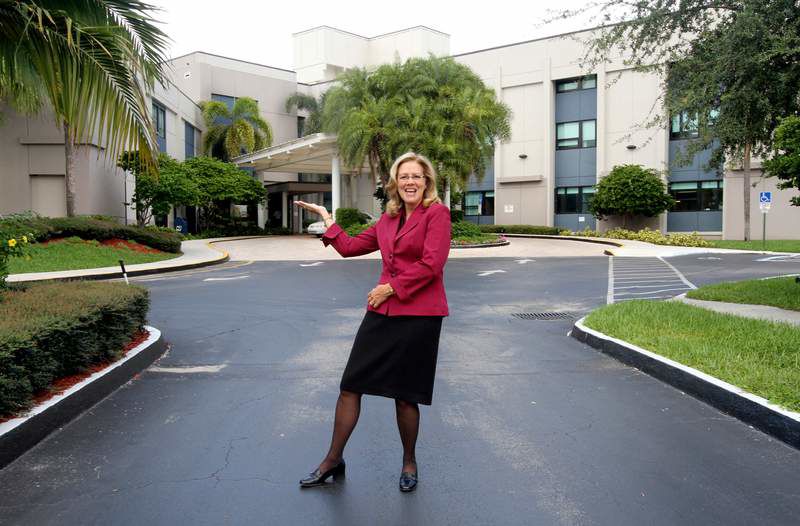Changing company culture: How to overcome resistance
Published 5:00 am Wednesday, October 20, 2010

- Barbara Simmons, CEO of Plantation General Hospital in Plantation, Fla., is trying to make her hospital more customer-friendly and a better place for workers.
Tell me you want to change the culture of my workplace, to turn it into a great place to work, and I can tell you what my response will be: I will sigh.
Been there, done that.
Most workplaces today are overflowing with people like me. Any attempts at changing the culture likely will be met with skepticism. Frankly, we’re distrustful. We’ve seen previous attempts at culture change fizzle and die.
It’s easy to wish for better customer service, stronger employee engagement or a reputation as one of the best places to work. But how does a company successfully overcome resistance and achieve culture change?
CEOs need to drive the change, says Doug Arms, senior vice president of Ajilon Professional Staffing.
“Unless you have that, it comes off as an initiative, and it will eventually lose steam.”
His advice to leaders: Rather than making a declaration about how you want to change your culture, just start to do it. “If you want to be viewed as a flexible workplace, provide flexibility. If you want to grow careers, get behind a mentor program.”
Leading the charge
Barbara Simmons is knee-deep in this journey. Two years ago, Simmons, chief executive officer of Plantation General Hospital in Plantation, Fla., decided it was time for change. After four years at the top, she wanted the hospital to give even better customer service to patients and their families and to the physicians that partner with the hospital. She wanted the hospital to be viewed as a place of healing, where departments work together and employees offer solutions.
“I knew it had to start and end with me,” Simmons said. Over the years, the 265-bed hospital just west of Fort Lauderdale, Fla., had tried all kinds of “flavor of the month” motivation programs that never really took hold.
To make it stick, she decided, she wouldn’t limit the initiatives to managers; she would get companywide buy-in and show that she personally was committed. “The bottom line for us is that our community is changing. A large percentage of our patients are uninsured and rely on us to take care of them.”
Simmons called together her top leaders to create a new mission statement and core values. In March, those leaders began training 800 hospital employees on what behavior they were expected to demonstrate. Evaluations were created around those stepped-up performance requirements.
Simmons put herself out there as a catalyst for change, huddling with nursing managers every morning to hear their feedback from patients’ families. She encourages managers to bring nurses who give extraordinary service into the huddle for recognition.
Meeting resistance
Of course, hospital-wide, selling mangers on change hasn’t been easy. Simmons has pushed up against the “been there, done that” attitude of complacent middle managers. “We had done a good job of director and staff training, but we realized we had not done a good job with middle management, who are the unspoken leaders.”
She discovered that each manager had a different standard on issues such as tardiness or dress code. Simmons now is launching a new middle-manager training program to ensure consistency and accountability.
Simmons recognizes it takes three to five years for organizational cultural changes to take hold. But she finds early results promising: Employee satisfaction is up, turnover has dropped, and surveys suggest that the community has taken notice of improved patient service and happy employees.
‘Journey of Excellence’
Meanwhile, on the other side of the country, Children’s Hospital of Orange County (Calif.) also has embarked on a major culture change — and faces resistance. CHOC is known for treating the sickest of sick kids in the region and wants to propel itself into the top echelon of children’s hospitals.
To make that happen, the hospital launched its Journey of Excellence program, coinciding with a merger with University of California-Irvine and a multimillion-dollar expansion. The trouble is that the pediatric hospital has tried upgrading its quality of service several times before, with lackluster results.
This time, CEO Kim Cripe committed herself to change, using a combination of traditional and unusual tactics: mandatory training workshops for leaders that include a primer on customer service; performance-based pay for managers, tied to each department’s milestones; and monthly performance discussions with employees, a reminder to keep their focus on improved customer service. A consulting firm is guiding Cripe through the process, encouraging managers to recognize behaviors they want repeated.
Like Simmons, Cripe has discovered where she needs to overcome resistance: the middle managers. In some areas of the hospital, Cripe discovered employees who didn’t know the goals of the team — or didn’t know who their manager was. In other cases, middle managers meeting individually with staff were not having meaningful conversations about how to improve service or how to help employees feel valued.
Alisha Blomker, organization development consultant with CHOC, said the administration now is going back and talking to managers about the reasons for the change.
“I think people are now starting to see that we are well into our second year, and this program hasn’t gone away, and we’ve had success,” Blomker said.
Arms, of Ajilon, feels leadership commitment must be combined with the recognition that those people who are unwilling to comply with change may need to be eliminated.
“If you really want to get buy-in,” he said, “start behaving like the company you want to be.”






